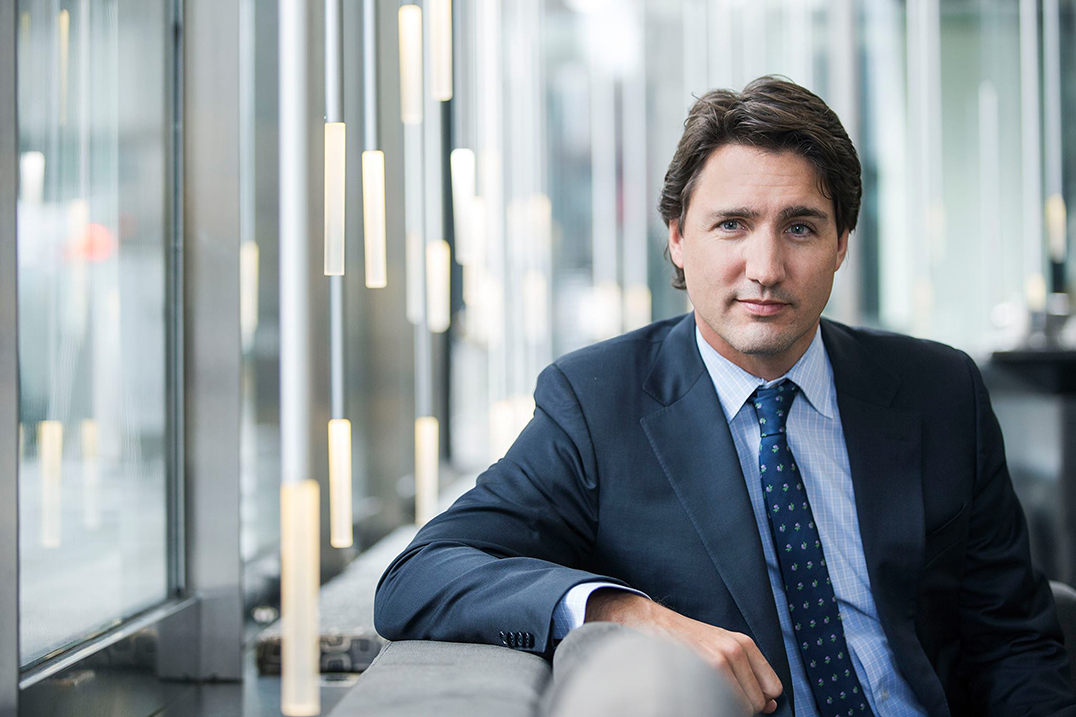OTTAWA—Liberal leader Justin Trudeau will be making history at Rideau Hall this morning (Wednesday, November 4) as Governor General David Johnston presides over the swearing in of the new Trudeau government. Mr. Trudeau will not only become Canada’s 23rd prime minister, replacing Stephen Harper after the Liberals defeated the Conservatives in the October 19 election, but he will be the first son of a former prime minister to be sworn in as a prime minister in his own right.
Mr. Trudeau and what is expected to be a 25-member cabinet will be sworn in at Rideau Hall and members of the public have been invited to watch Trudeau and other members of Parliament arrive for the event. The arrivals have been open to the public for the last several years, but there was no public announcement of that invitation.
The swearing-in ceremony, beginning at 10:30 am Eastern Time, is to be followed by an official photo session with the governor general, the new prime minister and his new government ministers. There has been much conjecture as to who be standing beside the new prime minister in that photo.
As to who he will anoint as his cabinet ministers, especially with the embarrassment of riches afforded by his majority win that includes a number of former government ministers from previous Liberal governments, there are many new faces with prestigious credentials on their curriculum vitae.
The incoming prime minister vowed to make his cabinet gender-balanced, with equal numbers of men and women, during his election campaigning, but he has also hinted that his cabinet will be smaller than what has been seen in recent years. His job will be made somewhat easier by the record number of female MPs, that number is 50 and comprises 27 percent of the 184 Liberals elected on October 19.
Mr. Trudeau has a number of challenges facing him due to his broader promise to craft his cabinet to reflect the face of Canada today, but the strong contingent of minority members elected under the Liberal banner, including former cabinet ministers, will make that somewhat easier.
Whoever becomes industry minister at the ceremony will also take on responsibility as the country’s registrar general and be presented by the Governor General with the Great Seal of Canada. At today’s swearing in ceremony, Mr. Trudeau and his new ministers will be following a time honoured tradition that includes the Oath of Allegiance, an Oath of the Members of the Privy Council for those who are not already members and an Oath of Office.
The oaths, which end in “so help me God,” can be altered should individuals chose to “affirm” their oath, in which case the word “swear” is replaced by the word “declare,” and the expression “so help me God” is omitted.
Outgoing Prime Minister Stephen Harper will have submitted his resignation to the Governor General shortly before the signing in ceremony.
Mr. Harper had 26 cabinet ministers, and an additional 12 ministers of state or junior posts, in his cabinet. Of those, women held 12 portfolios, including transport, environment, public works and labour.
The first election of a woman to Parliament was in 1921, when Agnes Macphail, a 31-year-old school teacher, was the first woman to sit in the House of Commons. It would take more than 30 years for the first woman to be appointed to cabinet—Ellen Fairclough, who was named to the cabinet of John Diefenbaker in 1957 and who went on to hold the portfolios of postmaster general and secretary of state of Canada.
The new prime minister’s father, Pierre Elliott Trudeau, appointed three women to his 1968 cabinet, while Brian Mulroney had 11 women serve in his cabinet during his time in office and Jean Chrétien had 16 female ministers.
As to aboriginal representation around the cabinet table, the Liberals saw eight of their 18 aboriginal candidates win a seat in the House of Commons, including Yvonne Jones (Inuit) in Labrador, Michael McLeod (Métis) in the Northwest Territories, Vance Badawey (Métis) in Niagara Centre, Robert-Falcon Ouellette (Cree) in Winnipeg Centre, Don Rusnak (Anishinaabe) in Thunder Bay-Rainy River, Hunter Tootoo (Inuit) in Nunavut, Dan Vandal (Métis) in Saint Boniface-Saint Vital, Manitoba, and Jody Wilson-Raybould (Kwakwaka’wakw) of Vancouver Granville, a former Crown prosecutor, treaty commissioner and regional chief of the BC Assembly of First Nations.



